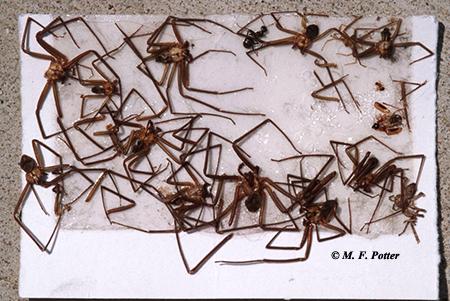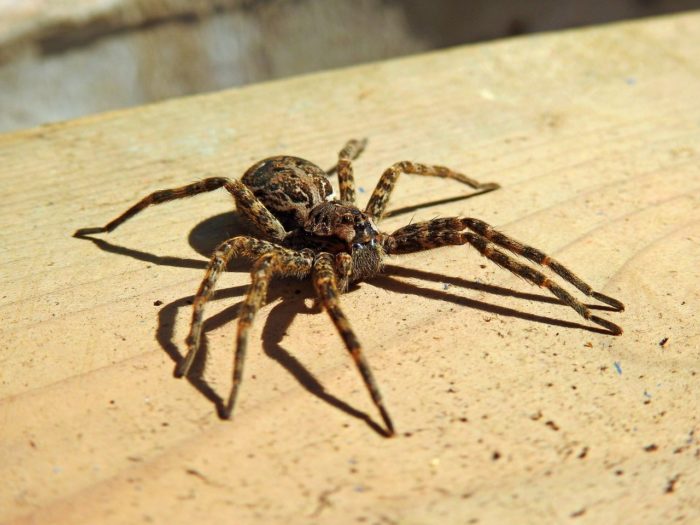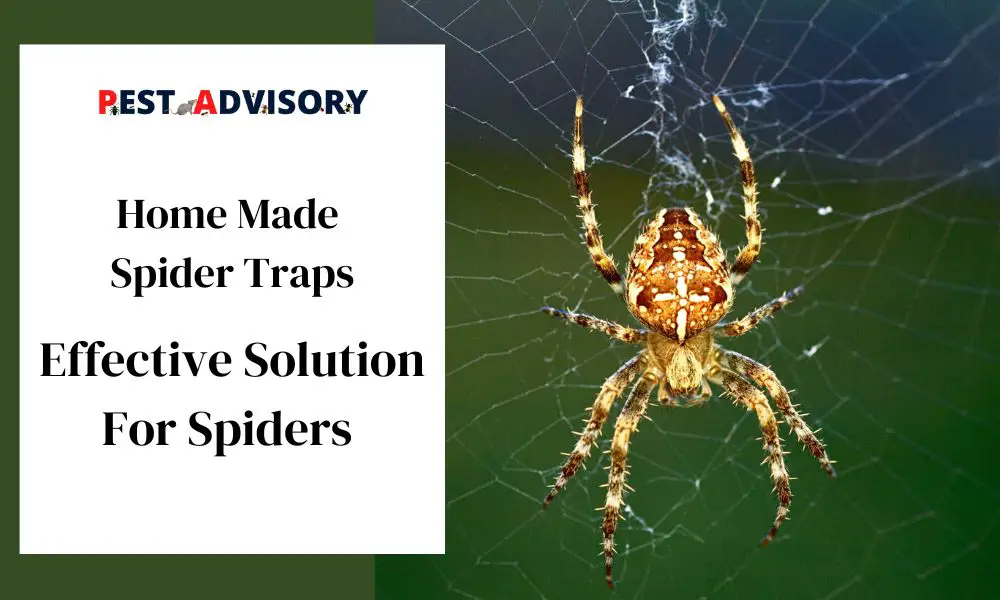To persuade a spider to come out of hiding, you’d have to make use of a spider trap and place it gently enough that the spider doesn’t notice you’re there.
DIY Spider traps are suitable to catch and control light spider infestations. Spiders are generally harmless though and are good for the house and garden as they control flies and other harmful insects.
However, having too many of them around can get frustrating. If you’re tired of these creepy crawlies, you’re in the right place because, in this article, we’ll be showing you how you can make your very own homemade spider traps!
Important Note: If you're tired of pests and want a reliable solution, then you should definitely consider seeking help from a professional pest control company. DIY solutions can be effective, but if you're dealing with a significant pest infestation, you don't want to rely solely on DIY methods. Pest control companies typically don't charge huge fees. You can fill out this form to receive free quotes from the top local pest control companies, and compare the quotes and see for yourself. Then, finally, your pest problems will be eliminated for good.
DIY Spider Traps: Step-By-Step Guide
1. Glue Trap or Sticky Trap
Here are the steps to make a DIY Glue Trap for Spiders
Materials
- Cardboard or plastic container
- Scissors
- Tape
- Non-toxic adhesive (such as glue or sticky tape)
Instructions
- Cut the cardboard or plastic container into a flat rectangular shape. The size of the trap will depend on the size of the container and the area you want to cover.
- Apply a layer of non-toxic adhesive, such as glue or sticky tape, to the surface of the cardboard or plastic. Be sure to apply the adhesive evenly across the surface.
- Place the glue trap in areas where spiders are likely to travel, such as corners or along baseboards.
- Or you can tie a piece of string or ribbon through the hole in the cardboard or heavy paper, creating a loop for hanging.
- Hang the sticky trap in areas where spiders are likely to travel, such as corners or along baseboards.
- Check the trap regularly to see if it has caught any spiders. If a spider is caught, dispose of the trap and replace it with a new one.
Tips
- You can use different sizes and shapes of containers to create glue traps of different sizes.
- To prevent accidental contact with the adhesive, place the glue trap in areas where pets and children cannot reach.
- To make it easier to dispose of the trap, you can place it in a plastic bag and seal it before throwing it away.
- Glue traps can be effective in catching spiders, but they may not be as effective for larger or more active spiders that are able to free themselves from the adhesive.

2. Jar Trap
Here are the steps to make a DIY Jar Trap for Spiders
Materials
- Wide mouth jar with a lid
- Bait (optional)
- Tape
- Scissors
- Piece of paper or cardboard
- Knife or scissors
- Water
Instructions
- Remove the lid from the jar and set it aside. If using bait, place a small amount in the bottom of the jar.
- Take a piece of paper or cardboard and cut it into a circle slightly smaller than the diameter of the jar lid. Place the paper or cardboard circle over the mouth of the jar.
- Use tape to secure the paper or cardboard to the jar lid, making sure to leave a small gap between the edge of the paper and the lid.
- Cut a small hole in the center of the paper or cardboard. The hole should be big enough for spiders to enter but not so large that they can escape.
- Fill the jar with water until it reaches the level of the hole in the paper or cardboard.
- Place the lid back on the jar and secure it tightly.
- Place the jar trap in areas where spiders are likely to travel, such as corners or along baseboards.
- Check the trap regularly to see if it has caught any spiders. If a spider is caught, dispose of the trap and replace it with a new one.
Tips
- You can use different types of bait to attract spiders, such as small insects or bits of fruit.
- To make it easier to dispose of the trap, you can place it in a plastic bag and seal it before throwing it away.
- Jar traps can be effective for catching smaller spiders, but they may not be as effective for larger or more active spiders.

Where to Put Spider Traps
By strategically placing spider traps in areas where spiders are most likely to travel, readers can increase the effectiveness of their DIY spider trap.
Along the Walls
Spiders tend to travel along walls, so placing traps along walls is a good way to catch them. Be sure to place the traps flush against the wall to ensure that spiders can’t crawl underneath them.
In Corners
Corners are another common area where spiders like to build their webs. Placing traps in corners can be an effective way to catch spiders before they have a chance to build a web.
In Dark, Undisturbed areas
Spiders prefer to build their webs in areas that are dark and undisturbed, so placing traps in these areas can increase the likelihood of catching them. For example, traps can be placed in closets, basements, attics, and crawl spaces.
Avoid High-Traffic areas
While it may be tempting to place spider traps in areas where you see a lot of spiders, it’s important to avoid placing them in high-traffic areas like doorways and walkways. This can increase the likelihood of someone accidentally stepping on the trap.

Warnings And Precautions
Sticky traps are cheap and effective, but they may also be cruel. Spiders’ legs become caught and they are unable to move as they stroll over the glue. The spiders die slowly and painfully since they can’t move.
Another word of caution setting up this trap might be a pain. When putting the trap together, the corn syrup and water mixture can make a big mess, but once the glue solidifies and dries a little, the cardboard becomes much simpler to handle.
If you’re creating your own sticky trap, keep in mind that double-sided carpet tape won’t work in place of glue. While this may work in a pinch, the tape will shortly lose its stickiness.
Conclusion
Spiders are annoying creatures. What makes them more irritating is the fact that spider exterminators charge a hefty price to get rid of these arachnids.
Making a DIY spider trap at home can be an effective and safe way to get rid of unwanted spiders without using harmful chemicals or expensive equipment. By following the simple steps outlined in this article, you can create a trap for spider that is easy to set up and can catch spiders quickly and easily.

